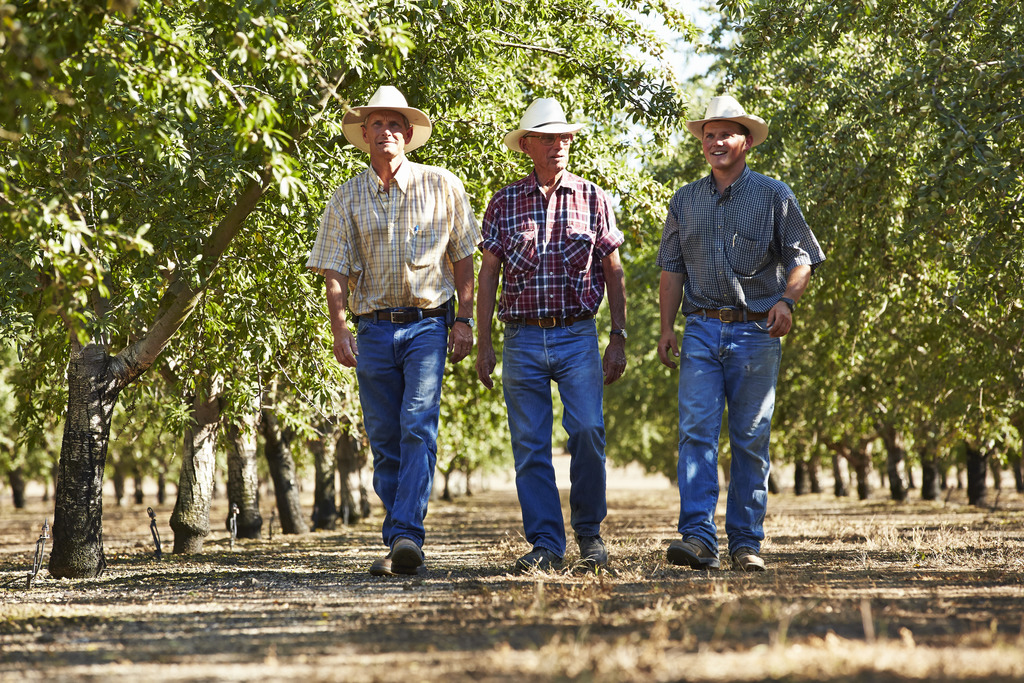During this month’s Society of Environmental Journalists Conference, Almond Board staff and almond grower Daniel Bays hosted several attendees on a tour of Bays’ almond orchard in Westley, CA.
Daniel is the third generation of his family to operate the Bays Ranch after moving to the Central Valley in 1957 from Ventura County. In addition to almonds, Bays Ranch grows apricots, tomatoes and lima beans.
Water use and efficiency was a clear interest of the group and Daniel explained that almonds use about the same amount of water as his apricot trees and is comparable to what is applied to his other crops.
He also discussed how other farmers and communities in his area will benefit from the North Valley Regional Recycled Water Program (NVRRWP). Currently, recycled wastewater from the nearby cities of Turlock and Modesto leave the area as it is released into the San Joaquin River. The NVRRWP will allow Turlock and Modesto to send its treated wastewater to the Del Puerto Water District via a direct pipeline to the Delta-Mendota Canal where Daniel and other farmers will have access to the water – possibly as soon as 2018.
Dr. Gabriele Ludwig, director for sustainability and environmental affairs at Almond Board of California (ABC) highlighted the robust self-assessment and grower education program, the California Almond Sustainability Program1. The sustainability program allows almond farmers to review their current growing practices while learning about other sustainable opportunities available to them. Data collected through this program to date is representative of the California Almond community and provides vital information on how practices are being adopted and used.
In addition, Gabriele shared that ABC has joined the Environmental Defense Fund (EDF) and other partners in carrying out a USDA-funded large-scale pilot project to quantify greenhouse gas reductions from improved nutrient management practices that can then become saleable carbon credits. The goal is for farmers to enter the cap-and-trade market and sell carbon credits to companies and industries seeking to meet their emission targets.
1. Sustainable almond farming utilizes production practices that are economically viable and are based upon scientific research, common sense and a respect for the environment, neighbors and employees. The result is a plentiful, nutritious, safe food product.


